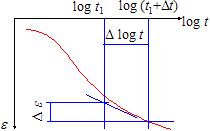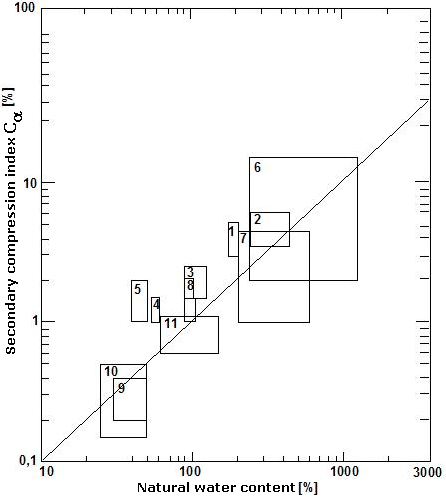Index of Secondary Compression
The index of secondary compression is proportional to the logarithm of time and the slope of primary consolidation (it is strongly dependent on the final effective stress in soil):
![]()
where: | Cα | - | index of secondary compression |
α | - | deformation of a soil layer | |
t1 | - | initial time of a period of monitoring (measured from the start of consolidation) | |
t2 | - | final time of a period of monitoring |
Determining the value of index of secondary compression Cα requires either laboratory (e.g. one-dimensional consolidation in oedometer) or in-situ measurements:
 Determination of index of secondary compression Cα
Determination of index of secondary compression Cα
Ranges of values of the index of secondary compression Cα
sand | 0.00003 - 0.00006 |
silty loess | 0.0004 |
clay | 0.01 |
The ratio between the index of secondary compression Cα and the compression index Cc is approximately constant for most of the normally consolidated clays for load typical in engineering practice. Its average value is 0.05.
Variation of natural moisture of soil as a function of the index of secondary compression Cα derived by Mesri appears in the figure:
 Variation of natural moisture of soil as a function of the index of secondary compression Cα after Mesri
Variation of natural moisture of soil as a function of the index of secondary compression Cα after Mesri
1 | Whangamarino clay |
2 | Mexico City clay |
3 | Calcareous organic silt |
4 | Leda clay |
5 | Norwegian plastic clay |
6 | Amorphous and fibrous peat |
7 | Canadian muskeg |
8 | Organic marine deposits |
9 | Boston blue clay |
10 | Chicago blue clay |
11 | Organic silty clay |